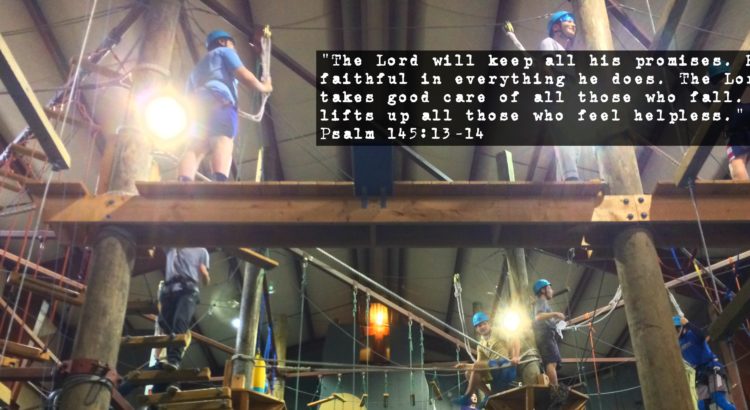“Last time I did this, I got stuck.” That’s what this high school sophomore told me as he prepared to climb the wooden ladder into our ropes course. “It took me half an hour to get down… but I’m not going to let that stop me today.”
His was the perfect example of the kind of resilience we try to foster in young people every day: to see them identify and then overcome challenges, especially where there had been failure before.
But for many young people, perhaps because they have been protected so completely from failure or its consequences by helicopter parents, or perhaps because they’ve not had the opportunity to revisit and overcome experiences where they had known failure before, this ability is lacking.
The Center for the Study of Social Policy speaks of the lifelong impacts of this unfortunate reality. “Youth who have never had to address challenges or have never experienced failure,” they write, “are not fully prepared for adulthood.”
And this is one of the reasons a high adventure experience like a ropes course is valuable for students. They have the opportunity to try, and fail, and try again… without the sometimes catastrophic effects of failure in real world circumstances like relationships, jobs, and social interactions. Unlike these situations, in a ropes course there’s always a safety system to catch them, and there’s always a caring adult to encourage them to get back up.
And that’s the other key benefit to these sorts of experiences. In the controlled environment of adventure recreation, young people can work to overcome stressful circumstances and challenges with the support and intervention of caring adults.
Danny, the lead facilitator for the day, noticed that this young man had climbed the ladder, but had not moved from the initial platform… for over 20 minutes. It was an opportunity to show him he noticed, and that he cared. So Danny blew his whistle, and invited this young man’s teammates (he was here with his high school hockey team) to engage, encourage, and support him as made his way across his first high adventure element since that day a year ago when he had gotten stuck.
Students need both. They need opportunities to try, and fail, and then try again… and they need to do it with the support of caring, reliable adults and peers all around.
It’s also significant that this is not just a social need or cultural reality. Our students need to be reminded that even when there’s no rope to catch them and no adult to encourage them to get back up, there is a God who loves them, is faithful to them, and will lift them up when they fall.
Psalm 145:13-14 says, “The Lord will keep all his promises. He is faithful in everything he does. The Lord takes good care of all those who fall. He lifts up all those who feel helpless.”
https://www.cssp.org/reform/strengtheningfamilies/practice/body/HO-3.1e-YT_Youth-Resilience.pdf
